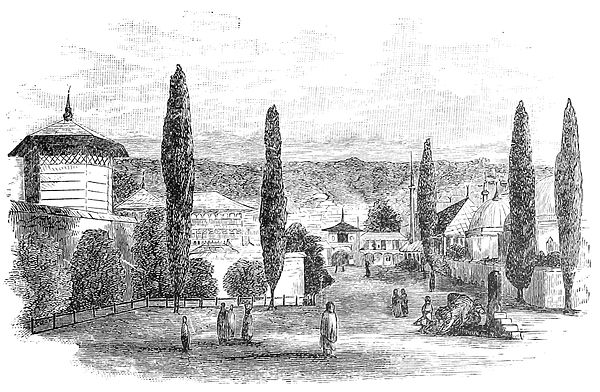"There are nearly a hundred steamers on the Caspian engaged in the oil traffic. They are of iron or steel, average about two hundred and fifty feet in length by twenty-seven or twenty-eight in breadth, and carry from seven hundred to eight hundred tons (two hundred thousand to two hundred and fifty thousand gallons) of petroleum in their tanks. Their engines are of one hundred and twenty horse-power, and make a speed of

TARTAR PALACES IN SOUTHERN RUSSIA.
ten knots an hour; they use petroleum for fuel, and it is estimated that their running expenses are less than half what they would be if coal were burned instead of oil. The steamers were built in Sweden or England, and brought through from St. Petersburg by means of the canals connecting the Volga with the Neva. Some of the largest steamers were cut in two for the passage of the canals, the sections being united at Astrachan or Baku.
"The oil-steamers for river work are from sixty to one hundred and fifty feet long; they are fitted with tanks, like the sea-steamers, and are powerful enough for towing tank-barges in addition to the transport of their own loads. They run from Diavet Foot to Tsaritsin, four hundred miles up the Volga, the first point where there is railway connection to Western Europe. Some of them proceed to Kazan, Nijni Novgorod, and other points on the upper Volga, and also through the canals to St. Petersburg, but the greater part of them land their cargoes at Tsaritsin.
"When you get to Baku you will see how rapidly the loading of the steamers is performed. When a steamer is ready for her cargo, an eight-inch pipe pours the kerosene into her tanks, and fills her in about four
